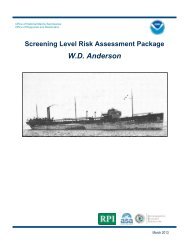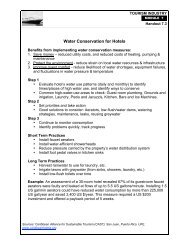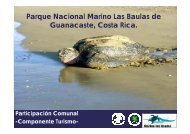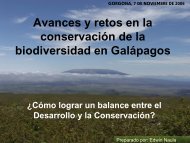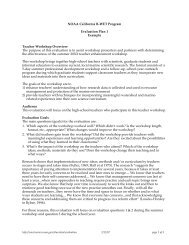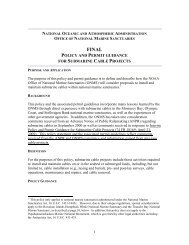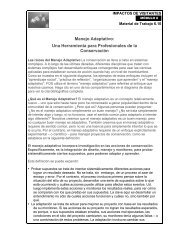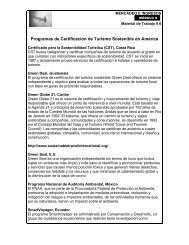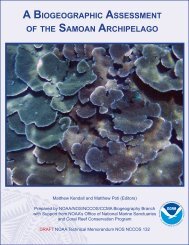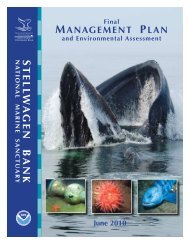The Hawaiian spinner dolphin, Stenella longirostris: Effects of tourism.
The Hawaiian spinner dolphin, Stenella longirostris: Effects of tourism.
The Hawaiian spinner dolphin, Stenella longirostris: Effects of tourism.
Create successful ePaper yourself
Turn your PDF publications into a flip-book with our unique Google optimized e-Paper software.
20<br />
Spinner <strong>dolphin</strong>s feed <strong>of</strong>fshore on mesopelagic fish and squid <strong>of</strong> the deep sea<br />
scattering layer at night and move into near-shore waters, <strong>of</strong>ten protected bays, during<br />
the day to rest (Norris and Dohl 1980). Feeding dives may start at dusk and continue<br />
throughout the night (Würsig, Wells, Norris and Würsig 1994), <strong>of</strong>ten with several<br />
schools coalescing to form large feeding aggregations that surface synchronously or<br />
sub-synchronously (Norris and Dohl 1980).<br />
Bays are thought to provide protection from rough seas and pelagic shark<br />
predation during periods <strong>of</strong> rest. Kealake’kua Bay on the island <strong>of</strong> Hawai'i is an<br />
established resting site for <strong>spinner</strong> <strong>dolphin</strong>s (Norris et al. 1985, Norris 1991; Wells and<br />
Norris 1994). Dolphins usually arrive in the bays just after sunrise and slowly descend<br />
into a period <strong>of</strong> rest (Würsig and Würsig 1983), as evidenced by a decrease in the<br />
frequencies <strong>of</strong> aerial activity and vocalizations. Dolphins become more active in the<br />
afternoon and begin to socialize before moving <strong>of</strong>fshore again to feed during the night<br />
(Norris and Dohl 1980, Würsig et al. 1994).<br />
Dolphin rest areas are distributed discontinuously along coastlines, for there are<br />
several coastal areas where schools <strong>of</strong> <strong>dolphin</strong>s congregate, and other regions <strong>of</strong> the<br />
coast that are devoid <strong>of</strong> <strong>dolphin</strong>s (Norris and Dohl 1980). Rest areas which may, or<br />
may not, contain coves seem to be chosen for their physical characteristics and<br />
proximity to feeding grounds (Norris and Dohl 1980, Wells and Norris 1994). <strong>The</strong>y are<br />
typically less than 50 m deep, but within a few km <strong>of</strong> deep water (greater than 500 m<br />
depth) and have sandy bottoms which may be dotted with coral formations. Some rest<br />
areas are visited on a regular basis, while others are used less frequently. Furthermore,



